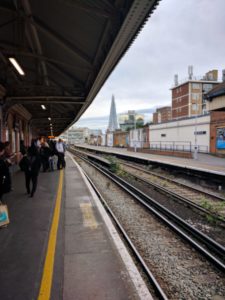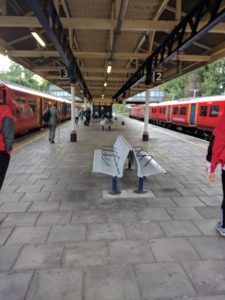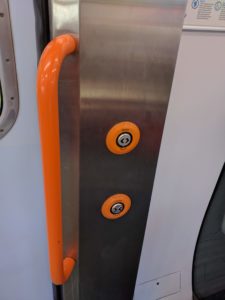There are many things that the locals take for granted, but someone that’s an outsider may find confusing. Riding trains, when you’re accustomed to driving everywhere, is one of those things. Here is a quick guide.
Step the First
Buy a ticket. Or don’t. If you’re traveling inside the 6 zones of London transit, you can use your Oyster card. Otherwise you can buy a ticket online via TrainLine or the train company website. Or you can buy a ticket in person at one of the ticket booths or self-service kiosks.
First class tickets cost more, have slightly more comfortable seats, and are near the front of the train. Not every train will have carriages with first class. If you have a second class ticket, it’s on you to not sit in first class. If you do find yourself in first class and a conductor comes along and finds you, plead ignorance and lean on your non-British accent. It might allow you to stay where you are. Otherwise move to a new seat in the regular carriages.
Outbound tickets are typically cheaper if you pick a specific time to leave. Return tickets don’t tend to matter as much. If you know you will be making your return outside of rush hour, get a non-peak return without a specific time. This will enable you to hop on the earliest train if, for example, your meetings end early. Otherwise, if you have a specific return time, you might find yourself sitting in Leeds for two hours while your coworkers abandon you to get back to London earlier.
Step the Second
Get on the right train. If you’re going to a major terminal or junction, this is easy. If you’re going to a stop between major terminals or junctions, be sure you’re not on an express train that will skip your stop.
The trains are ordered by departure time. If you scan down from the destination, you’ll see all the intermediate stops. Say you’re at Waterloo and you want to get to Barnes. You can hope on a train bound for Twickenham, and it will probably stop at Barnes along the way. But there’s also an express that will hit Clapham Junction, Richmond, and Twickenham while skipping everything in the middle. If you get on that train, you’ll speed right past Barnes and find yourself in Richmond, which means you’ll either be waiting on a new train going the opposite direction or walking to the bus stop.
Step the Third
Get off the train before it leaves your destination. Seems obvious, but if you’re standing at the doors waiting on them to open, you might be in for a surprise.
Unlike the tube, train doors do not necessarily open on their own. When the button lights up, push it.
Other Things
Don’t be afraid to take an inside seat if it’s empty. People will either scoot over or let you past them. You sitting down means there’s more space for others to stand.
If you’re wearing a backpack on a crowded train, take it off and set it between your feet. It makes more space for others to stand, and it keeps you from smacking people when you turn around to reach the door behind you.
Either hold onto a rail or take a good stance for balance. (Feet shoulder width apart and turned to a wide angle.) Don’t lean on the rail. Don’t slouch against the wall and fall over when the train stops.
Navigating the trains is not hard, but it’s also not intuitive to new people. Hopefully this will help you avoid some of the mistakes I have made.
Cancellations
If your train is canceled, the board at the station will list your alternative trains. Sometimes this means any other train from that line, but if it’s on another line, you lose that flexibility. I can speak from experience when I say that riding the wrong train on another line means you get to buy a new ticket at full price.


